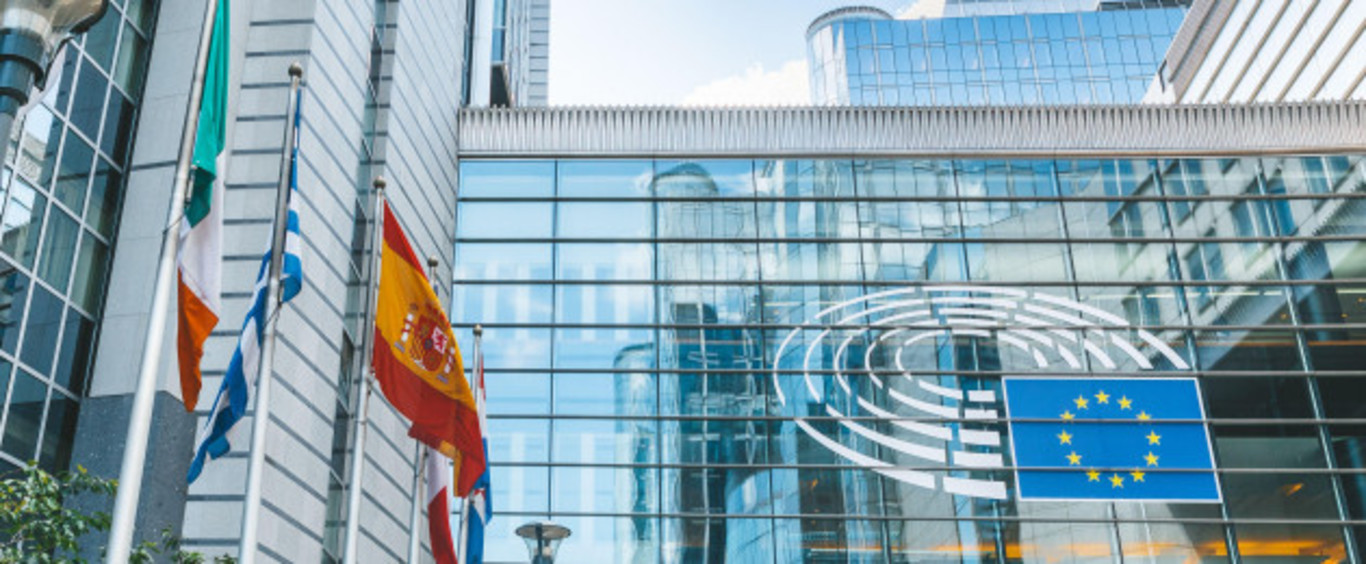Cash for reforms: €700 billion EU recovery fund sparks concern and criticism
Analysis by Noteworthy and European journalists finds that Ireland is among several member states who repackaged old promises in reform plans.

IRELAND IS ONE of a number of EU countries who have repackaged old promises as part of its pledged Covid recovery reforms, a new analysis has found.
The EU has set up a €700 billion fund to help economic recovery after the pandemic. What is unique about the programme is that payment is conditional on the achievement of pledged reforms to make the EU’s economy more resilient.
But upon closer inspection, several of these reforms are hardly revolutionary, with some measures already underway and others legally required by some countries regardless of the EU fund.
Ireland’s carbon tax promise is one example of this. Our government committed to raise its carbon tax by €7.50 annually as part of this EU funding agreement.
Dr Diarmuid Torney, co-director of DCU’s Centre for Climate and Society, said that this milestone was “an easy win” for the government as it was already a “long-standing commitment” with cross-party consensus. He added:
This was going to happen anyway.
In fact, the first two milestones as part of this measure – introducing legislation and a first increase of carbon tax – were already complete before the government submitted its plan to the European Commission in May 2021.
Like all member states, Ireland was required to submit such a plan before it could get any funding from the Recovery and Resilience Fund (RRF) – the €700 billion programme set up to help EU economies recover from the pandemic-induced lockdowns.
Ireland submitted one of the shortest plans and received one of the lowest amounts per citizen. In total, our plan is worth under €1 billion in funding.
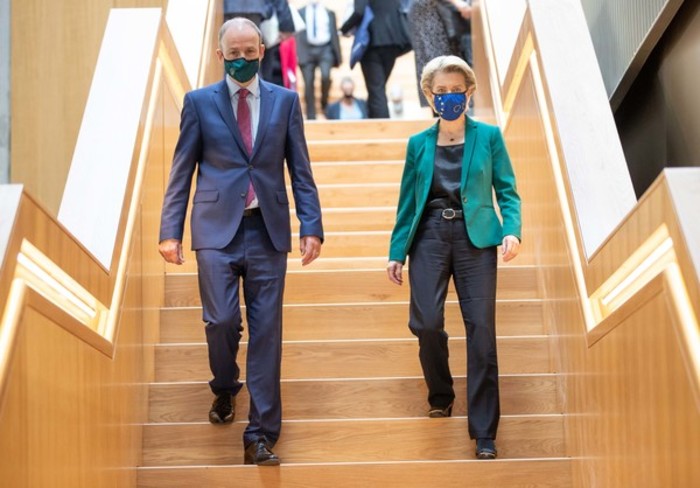 European Commission President Ursula von der Leyen on a visit to Ireland in July 2021 to discuss Ireland's Recovery and Resilience Plan
European Commission President Ursula von der Leyen on a visit to Ireland in July 2021 to discuss Ireland's Recovery and Resilience Plan
Being compensated for measures that are already complete is something that member states pushed for during negotiations but was not initially included by the Commission.
This system of cash-for-reforms was introduced to gain the support from the so-called ‘frugal’ member states: the Netherlands, Austria, Sweden and Denmark.
The idea was for the system to be a kind of insurance policy to make sure that the money also contributed to making the economies of poorer member states more resilient against future economic shocks.
This arrangement was agreed at a five-day EU summit in Brussels in July 2020. Since then, the greater part of the Recovery and Resilience Fund has still to be disbursed, with the programme running until the end of 2026.
The Commission has so far disbursed €95 billion in grants and €47 billion in cheap loans. The total fund consists of €338 billion in grants and up to €386 billion in loans.
Ireland hasn’t received a cent as yet as the government hasn’t submitted its first payment request, with a number of its initial milestones to be completed as of its latest update to the Commission last year.
“Implementation of the overall plan is well underway,” according to a spokesperson for the Department of Public Expenditure and Reform. They told Noteworthy:
“On 13 January 2023 following extensive engagement, the Commission adopted the Operational Arrangements for Ireland’s Recovery and Resilience Plan.”
These set out how the milestones and targets are to be monitored and “the next step” is their signing by Minister Paschal Donohoe as well as the European Commissioner for the Economy.
Cash for vaccine delivery
This system of cash for reforms has led to embarrassing delays for some countries, including Germany who made a bet on delivery of a Covid vaccine being developed by German pharmaceutical company CureVac.
The German government promised the Commission that it would invest €712 million in vaccine companies and that this would lead to a second approval request at the European Medicines Agency (EMA), in addition to the already approved Pfizer vaccine, developed with German company BioNTech.
But CureVac was unable to deliver. Following disappointing results regarding the vaccine’s effectiveness, the German company announced in October 2021 that it had decided to withdraw its vaccine candidacy from the approval process. In the end, Germany invested €121 million less than intended.
 CureVac based out of Tübingen in Germany did not deliver a promised Covid vaccine
CureVac based out of Tübingen in Germany did not deliver a promised Covid vaccine
The failure was not only an embarrassment for CureVac, but it also put the German government in a difficult position, having repercussions beyond that specific investment as it was included in the country’s national Recovery and Resilience Plan.
A successful second vaccine was part of a package of 37 ‘milestones and targets’ Germany had promised to achieve before the Commission would pay Germany an RRF instalment of €4 billion.
As it had not achieved all of its goals, the Commission could reduce the German payment by an amount determined at its own discretion.
Resilience-raising reforms
This is one of the reasons why the recovery fund is breaking new ground: member states do not receive money from the fund as reimbursements for specific costs, but only when they have fulfilled certain promises.
These are the so-called milestones and targets member states have included in their Recovery and Resilience Plans, which have been approved by the Commission and the other member states.
Ireland’s plan has 74 milestones and 35 targets across 16 investment projects and nine reform measures. These are split between three priority areas: Green Transition (€518m), Digital Reform (€291m) and Job Creation (€181m).
A team of international journalists led by Follow the Money and including Noteworthy as an Irish parter are collaborating under the banner of the #RecoveryFiles. We have investigated some of the promised reforms made by their member states and how they have been implemented so far.
This has resulted in a picture which varies greatly from country to country across the continent, but it also raises questions about how the RRF will be implemented in the coming years.
How has the innovative cash-for-reforms system worked until now? And what hurdles and political challenges are up ahead?
The Recovery Files is a pan-European research project investigating the Recovery and Resilience Facility, initiated by Follow the Money in 2021. You can find out more and help support the Irish contribution to this investigation here.
Old reforms repackaged
One discovery made during the investigation was that at least seven member states, including Ireland, had included measures in their plans which were actually not new at all.
Of the 46 milestones and targets which Ireland included in its plan for the first financial instalment, five had already been fulfilled before the other member states approved the Irish plan.
In addition to the carbon tax measures, two milestones were also completed in relation to “aggressive tax planning” in Q4 2020 and a “report on the supplementary pension landscape” was published in November 2020 which fulfilled a pension reform milestone.
Others were near completion at the end of May 2021 when the plan was submitted.
These included the entry into force of the Climate Action and Low Carbon Development (Amendment) Bill 2021 which was signed into law less than two months later on 23 July 2021, and just two days after the Commission endorsed Ireland’s plan.
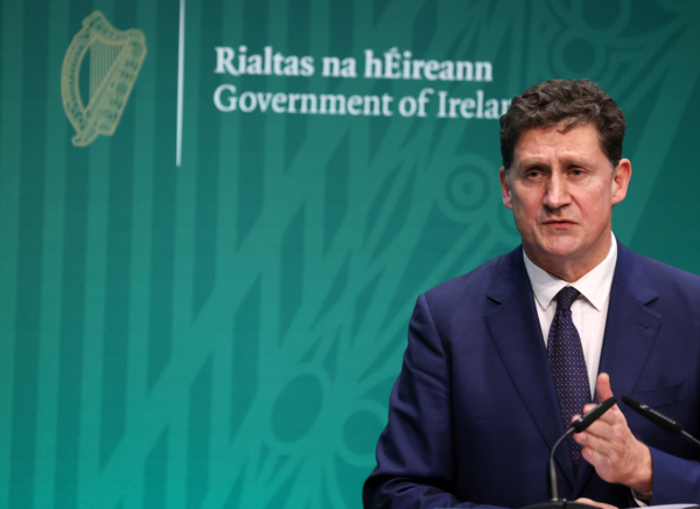 Minister Eamon Ryan said it was a landmark day when this Bill was made law
Minister Eamon Ryan said it was a landmark day when this Bill was made law
An even higher proportion were fulfilled by Germany who had completed 23 out of 37 initial milestones and targets before plan approval. In other words, more than half of Germany’s promises for the first tranche required no effort.
One such milestone was the approval of a first vaccine against SARS-CoV-2, a condition which had already been met in December 2020 when the EMA approved the Pfizer-BioNTech vaccine. Despite that, Germany included the approval of this vaccine as a to-be-achieved milestone when it submitted its plan on 28 April 2021.
According to documents made public following a request from Die Welt, the Commission pointed this out to Germany in its informal discussions about the draft plan. EU civil servants encouraged Germany to include a more ambitious goal – which is where the promise for a second vaccine came from.
It is unclear to what extent the Commission made similar suggestions to other countries – the Commission has refused access to many documents on discussions on member states’ plans. However, the Commission did approve all of the plans, including the six which included pre-achieved milestones.
The Netherlands proposed to achieve 26 milestones before it would request its first instalment. Of these, 13 had already been completed by 8 July 2022, the day the Netherlands submitted its plan to Brussels. One such milestone was the coming into force of a revised Open Government Act – something which had already happened on 1 May 2022.
Inclusion of reforms already achieved
This repackaging of old reforms was not what Ireland, the Netherlands, Germany and other member states originally had in mind.
A month before the decisive EU summit, Merkel was told by her civil servants that Germany could be “a role model” to other member states if its plan contained “an ambitious reform project”.
When Merkel and her colleagues signed off on setting up the pandemic fund in July 2020, they said that the national plans should include “the reform and investment agenda of the Member State concerned for the years 2021-2023”.
The Commission’s proposed legal text setting the detailed rules for the fund spoke of “the subsequent four years”.
 Angela Merkel talking to Emmanuel Macron during EU talks a few hours before the recovery plan was finalised
Angela Merkel talking to Emmanuel Macron during EU talks a few hours before the recovery plan was finalised
But during parallel negotiations on these details, EU diplomats from the various member states were already changing which measures would be allowed as reforms and investments.
A number of member states wanted to be able to include reforms already agreed on or achieved, and investments already made.
A previously confidential document written in the same week as the summit has shown that diplomats from France, Cyprus, Latvia, Hungary and Malta were lobbying in favour of including old reforms and investments.
Following an ‘access to documents’ request from Follow the Money, the EU Council released a 250-page document which contained the positions of member states on the draft regulation.
The Maltese delegation argued that member states should be allowed “sufficient flexibility to include proposals for reforms that would have already taken place”.
France added that this was necessary because otherwise member states would “put off” reforms until they were RRF-eligible. Hungary argued – successfully – that reforms and investments “initiated by the member states after 1 February 2020” should be eligible.
Sweden and Austria were the only countries mentioned in the document as opposing it, although a spokesperson for the Dutch Ministry of Foreign Affairs said that the Netherlands also “actively advocated” for not using the RRF to finance “existing measures”.
According to this confidential document, the Austrian delegation said: “Funding [at] the EU level should be used as a carrot for ambitious structural reform that would otherwise not take place.”
Given that context, it is surprising that Austria and the Netherlands ended up deciding to do the opposite of what they originally lobbied for. The Austrian think tank Momentum Institute found that of the investments announced in Austria’s ultimate recovery and resilience plan, only 4% were new.
An analysis by Noteworthy of Ireland’s plan found that a number of the projects were already planned or well underway. This includes the carbon tax milestone which our plans states “is a key policy lever in support of Ireland’s transition to a carbon neutral economy as set out in the 2020 Programme for Government”.
Another, the Schools Broadband Programme, has been ongoing in various iterations for more than a decade. It is currently funded and managed by the Department of Education at an annual cost of €13 million.
It was allocated €13.5 million under the RRF with targets of “installed routers in at least 750 primary schools” by the end of June 2022 and “at least 990 primary schools” by the end of September last year.
A spokesman for the Department of Education told Noteworthy that “in May 2021, some 900 primary schools were on high speed connectivity”. They added:
“That number has now increased to some 2,000 primary schools on high speed connectivity, delivered through commercial provision, the ongoing implementation of the National Broadband Plan and progress through the NRRP [National Recovery and Resilience Plan] project.”
The same RRF project on digital infrastructure in schools also had one of Ireland’s simplest milestones to achieve – publication of a circular to schools. This circular which detailed a grant scheme was sent to schools by the Department in November 2021.
Other projects in Ireland’s plan that were already planned or underway include the enhanced rehabilitation of Bord na Móna peatlands, the acceleration of investment to support electrified rail services in the Cork metropolitan area and retrofitting of buildings under the public sector Pathfinder Programme.
Gratuitous goals
We also found several instances of member states including compulsory measures they are required to take as milestones or targets.
At least eight member states (Bulgaria, Croatia, Cyprus, Italy, Lithuania, Romania, Slovakia and Spain) have included milestones or targets which promise to ‘transpose’ EU directives into national law, or which promise to achieve targets laid down in such directives.
But adapting national laws to reflect agreements laid down in a new EU directive – a process called transposition – is always obligatory, with or without the RRF, and these agreements come with deadlines. Yet the Commission has accepted milestones which promise directive transpositions later than the legally agreed deadline.
 Transposing European directives is not optional
Transposing European directives is not optional
In some cases, the promises relate to measures member states should have taken a long time ago. In 1991, EU member states adopted a directive to make sure that urban waste water was properly treated, which included targets for 2000 and 2005.
Italy and Spain were among the countries not meeting those targets and the Commission even resorted to taking Italy and Spain to the Court of Justice of the European Union (CJEU) in 2019 and 2022 respectively.
However, the Commission also accepted the two southern countries using the RRF to finally meet these targets.
Italy promised that none of its inhabitants would be living “in agglomerations non-compliant” with the directive by the end of March 2026, while Spain promised to introduce measures “aiming at ensuring compliance” with the EU rules by mid-2023.
Italy also included eight (sub)targets for the increase of the share of the waste that it recycles by the end of 2025. But these are not originally from Italy either. Of this, Jean-Pierre Schweitzer, expert on EU waste legislation at the European Environmental Bureau, said:
These waste targets are already agreed, legally binding objectives within the packaging and packaging waste directive and the waste framework directive.
The same can be said about Italy’s promise to set up a national air pollution control programme by Q4 2021 (required since 1 April 2019), Bulgaria’s promise to define energy poverty by Q4 2022 (required since 31 December 2020) and Lithuania’s promise to make sure public sector websites are accessible to disabled people by Q1 2023 (required since 23 September 2020).
There are two ways of looking at this development. The recovery fund rules state that it cannot be used to pay for “recurring national expenditures” except in “duly justified cases”.
Politicians from ‘frugal’ countries may say that the Commission is rewarding member states with money from an EU fund for measures they are legally obliged to take anyway – and which other member states have paid for out of their own national budgets.
Those from southern or eastern EU countries may point out that there are still enormous differences between what member states can afford to spend.
The RRF grants are divided between the member states based on criteria that are supposed to make sure that the fund supports the countries heaviest-hit by the pandemic. That is why Germany has been allocated €28 billion, while Italy is due to receive €69 billion.
Another view is that the existing methods to make sure member states carry out common agreements like EU directives have their limitations.
Although the Commission has emphasised in a strategy paper published in October 2022 that the Recovery and Resilience Facility “is not an enforcement tool”, the system of milestones does give the Commission an additional device to make member states comply with EU laws.
Will the Commission pick a fight?
That said, this would require the Commission to muster the political will to pick a fight. As political scientist Dr Tommaso Pavone said in an interview with Follow the Money last year, the Commission is showing a decreasing willingness to make sure member states enforce EU law in their own countries.
The crucial question for the RRF is: What will the Commission do if milestones or targets are not met or if member states backtrack?
There is some evidence to suggest that the Commission is willing and able to stand its ground. “The RRF does have added value and we have seen it pushing reforms across the finish line,” says Dr David Bokhorst, research fellow at the European University Institute.
In countries like Italy, you can also see that the system of milestones has stabilised long-term transformations.
In November 2022, the Commission disbursed €21 billion to Italy after it completed 45 milestones and targets. One of them was a new law which made companies accept electronic payments as a way of reducing tax evasion.
 Italian prime minister Giorgia Meloni was warned by Brussels not to undermine its tax evasion fight
Italian prime minister Giorgia Meloni was warned by Brussels not to undermine its tax evasion fight
Shortly after receiving the funds, the Italian government made a proposal that would weaken the new law by waiving penalties for transactions below €60. Following criticism from Brussels, Italy quickly decided to scrap the proposed change in law.
While Italy has already received €67 billion from the RRF (€29 billion of which is in grants it does not have to repay), it can still expect a further €123 billion up to 2026. However, if the Commission detects any backtracking with regard to past milestones, it can decide to withhold the funds.
Changes to rule of law
Most of the attention will probably go to how the Commission is going to react to payment requests from Poland and Hungary, which first need to resolve core rule of law issues before they can receive any RRF money.
The Polish government will have to fulfil several milestones related to this, including the status of judges who were suspended by the Disciplinary Chamber of the Supreme Court – an institution the Court of Justice has ruled lacks political independence.
EU justice commissioner Didier Reynders said earlier this month that a new draft law amending the law on the Supreme Court was “a promising step forward” towards complying with the promises in Poland’s Recovery and Resilience Plan. With almost €3 billion for the first RRF instalment at stake, the bill passed in the Sejm – the lower house of parliament – a few days later.
However, some have concerns as Poland merely promised a reform which ensured that the affected judges “have access to review proceedings of their cases”. This promise does not guarantee that the judges will be reinstated, which was what the Court of Justice demanded.
In August 2022, four groups of European judges filed a lawsuit before the Court of Justice to reverse the member states’ approval of the Polish recovery and resilience plan.
In a statement, the organisations said that the Polish milestones “fall short of what is required to ensure effective protection of the independence of judges and the judiciary and disregard the judgments of the CJEU on the matter”.
The Commission can also expect other, smaller test cases, which will elicit less attention than its high-profile rule of law battles with Poland and Hungary.
One is the payment request for €3 billion that Romania submitted in mid-December 2022. The Commission will have to determine whether Romania fulfilled the milestone which promised the transposition of the EU whistleblowers’ protection directive.
The draft Romanian law implementing those rules has been heavily criticised by the European Public Prosecutor’s Office (EPPO), which feared that the law offered so little protection, it would actually discourage potential whistleblowers in Romania. Although the text was amended before it became law, concerns remain.
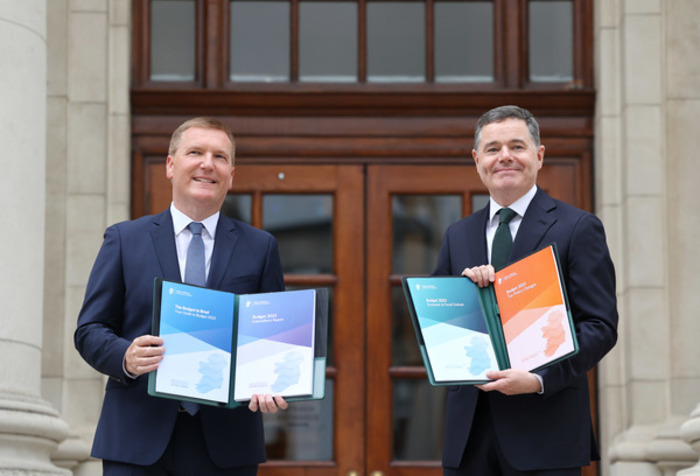 The announcement of energy supports was a key feature of Budget 2023 in Ireland
The announcement of energy supports was a key feature of Budget 2023 in Ireland
Another issue involves an Irish milestone. Ireland promised to raise its carbon tax annually, thus making the use of fuels with high CO2 emissions less attractive.
But while our government did increase the carbon tax rate as promised, it also adopted a number of measures that can be seen as offsetting the measure’s effect, like providing households with energy credits worth €800.
In a press release from last April, the government stated that a reduction in VAT on gas and electricity would “more than offset the increase in carbon tax”.
DCU’s Dr Diarmuid Torney said that the risk is that these “supposedly temporary” cost of living measures would become permanent as “it is politically difficult to reverse [measures] that make the cost of fuels cheaper”.
The European Commission’s assessment of Ireland’s plan stated that carbon tax is “expected to help decarbonise the economy”.
When asked about the impact energy supports are having on this ambition, a spokesperson for the Department of Finance said that the Commission has been provided with “full details and evidence of the implementation of carbon tax rate increases”.
The RRF regulation states that there should be “satisfactory fulfilment” of the milestones and targets, leaving a margin of discretion for the Commission.
What is still unclear, however, is what would happen if the Commission determines that one or several of the milestones or targets whose fulfilment is required for a financial instalment has not been “satisfactorily fulfilled”.
The milestones model
Although the Recovery and Resilience Facility is not due to be evaluated until February 2024, there are signs that the model of payments linked to milestones and targets is already becoming a blueprint for other EU funds.
In June 2021, the Commission proposed establishing a Social Climate Fund. This fund is meant to compensate Europe’s poorest households for the costs of the energy transition.
The draft legislation setting up the fund proposed that member states would be required to submit national plans to Brussels, in which they would promise milestones and targets. The reimbursement of money from the fund would then be conditional on the fulfilment of those milestones and targets – exactly the way it works with the RRF.
When asked about this comparison, the Commission would only acknowledge that the Social Climate Fund, like the RRF, “is a plan-based and results-oriented financial instrument. However, the characteristics of the Social Climate Fund, including its objectives, target groups, duration and eligible measures, are rather specific and different from the Recovery and Resilience Facility.”
The European Court of Auditors did state that the plan for the Social Climate Fund “builds on basic features from the Recovery and Resilience Facility”, and stressed “the importance of drawing on lessons learned from the implementation of the RRF”.
The auditors warned that it should be made clearer when milestones and targets can be considered “satisfactorily fulfilled”.
Holding off on payment requests
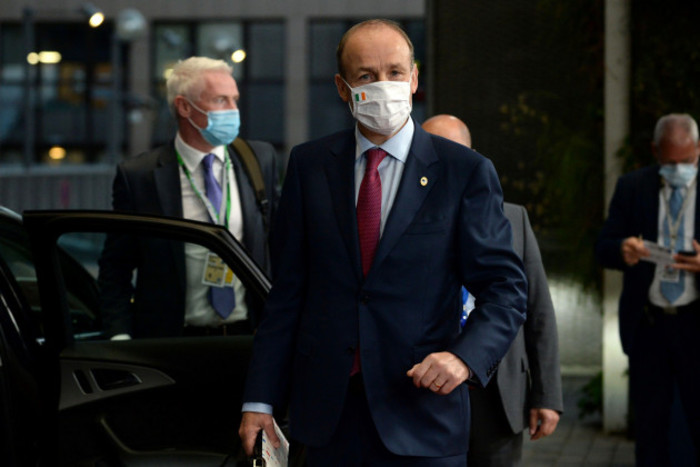 Then Taoiseach Micheál Martin leaving a meeting at the EU summit shortly after the RRF plan was agreed
Then Taoiseach Micheál Martin leaving a meeting at the EU summit shortly after the RRF plan was agreed
Researcher Dr David Bokhorst points out that the Commission will have to monitor more than 5,000 milestones and targets, with the easy ones having been set for the first years of the fund’s lifetime. He added:
“The really difficult targets have yet to be achieved and are scheduled to be fulfilled in 2025 and 2026.”
He highlights one of Portugal’s targets – to enrol 800,000 participants in the Portugal Digital Academy programme by the third quarter of 2025. “That is 8% of the entire population. How can we make sure they all follow these training courses? What is the quality of those training courses?”
A target in Ireland’s plan involving a large number of people is the enrollment of at least 430,000 patients – just over 8% of the entire population – “with chronic disease or high risk of chronic disease” in a component of the Chronic Disease Management Programme by the end of this year.
This programme was introduced by the 2019 GP agreement, with patients who are enrolled in it having “two scheduled reviews in a 12-month period”.
Last September, the European Court of Auditors explained in a report why difficult targets could become a problem. It said:
The amount paid in a specific instalment is not necessarily based on the estimated costs for achieving the milestones and targets included in the payment request, but rather a result of the negotiations with the member state in question.
As a result, in the case of partial fulfilment of milestones, it would be “difficult to determine which reduction would be appropriate”.
The auditors urged the Commission to establish a method to calculate how to reduce payments in the case of failed milestones, so that each member state is treated equally.
The Commission told Follow the Money that it is “following up on the European Court of Auditors” recommendation to the Commission to prepare a partial payment methodology, but declined to say when this would be ready.
It has apparently not needed such a methodology for the 20 milestone-related payment requests it has received so far. These were made to 11 out of 27 member states who have so far fulfilled their first milestones and targets.
A spokesperson for the Department of Public Expenditure and Reform told Noteworthy that Ireland’s first payment request process “began in December with annual payment claims to follow until 2026″.
The first step is an informal cooperation process between the Commission and Ireland. Upon completion of this informal process, Ireland will present a formal payment request to the Commission.
The Commission then checks for “the satisfactory fulfilment of Ireland’s milestones and targets”. Following this, the payment request “is considered by Council after which the Commission processes the payment”, the spokesperson added.
Several member states are clearly holding off on submitting payment requests until they have acquired informal confirmation from the Commission that the required goals have been reached.
Germany is one such country, having originally planned to send a payment request in mid-2022. After the CureVac setback, the government decided to wait.
In December 2022, it submitted a new version of its national plan with amended goals. This will now have to be approved by the Commission and other member states. The German finance ministry expects to be able to send the delayed payment request in Spring 2023.
That Germany, the EU’s largest and richest member state, would be one of the first countries to tell the Commission that it would be unable to fulfil all its promises was probably not what Merkel had in mind when she left Brussels after the marathon summit in July 2020.
—

By Maria Delaney of Noteworthy and Peter Teffer of Follow the Money
The Recovery Files is a pan-European research project investigating the Recovery and Resilience Facility, initiated by Follow the Money in 2021. You can find out more and help support the Irish contribution to this investigation HERE>>
The production of this investigation was supported by a grant from the IJ4EU fund. The following journalists also contributed to this article:
- Austria: Ben Weiser, ZackZack • Belgium: Lars Bové, De Tijd & Steven Vanden Bussche, Apache • Czech Republic: Petr Vodsedalek, Deník • Denmark/Sweden: Staffan Dahllöf, DEO.dk • Finland: Jarno Liski, Iltalehti • France: Adrien Sénécat, Le Monde • Germany: Hans-Martin Tillack, Die Welt • Greece: Janine Louloudi, Reporters United • Hungary: Gabi Horn, Szabad Európa • Italy: Carlotta Indiano & Giulio Rubino, IRPI • Lithuania: Daiva Repeckaite, freelance journalist • Netherlands: Ada Homolova & Nadia el Khannousi, Follow the Money • Poland: Maria Pankowska, OKO.press • Romania: Attila Biro & Mihaela Tănase, Context Investigative Reporting Project Romania • Slovakia: Karin Kőváry Sólymos & Karolina Farská, Investigatívne centrum Jána Kuciaka
Please support our work by submitting an idea, helping to fund a project or setting up a monthly contribution to our investigative fund HERE>>

